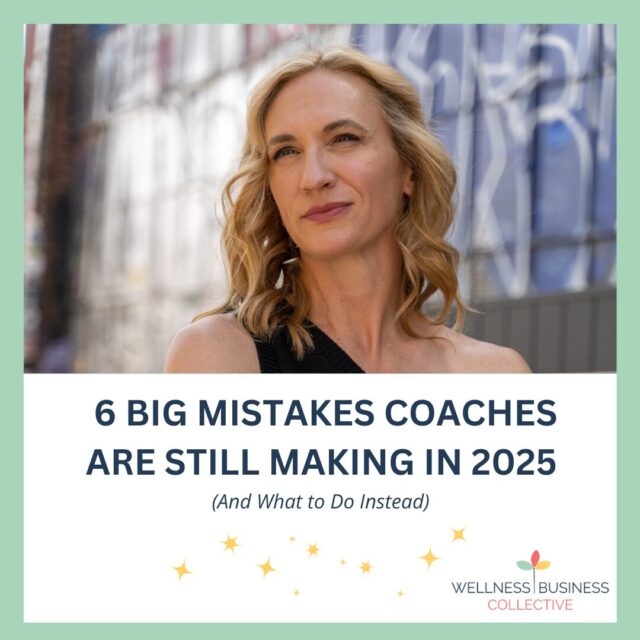How to Master Coaching Sales Strategies (Without Feeling Like a Used Car Salesperson)
💰 Coaching Sales Strategies That Feel Authentic (Not Sleazy!) 💰
If selling your coaching services makes you break out in a nervous sweat, you’re not alone. Many coaches avoid sales because it feels pushy, awkward, or just plain icky. But here’s the truth: sales is just an invitation to transformation.
Selling isn’t about convincing someone to buy—it’s about helping them make a powerful decision for their growth. So let’s ditch the sleazy tactics and talk about coaching sales strategies that feel natural, ethical, and (dare I say) even fun. 🚀
Step 1: Reframe Sales as a Service
The biggest reason coaches struggle with sales? They see it as taking rather than giving. But selling isn’t about pressuring someone into a sale—it’s about showing them what’s possible and guiding them toward a solution.
💡 Shift your mindset: Instead of thinking, “How can I get this person to buy?” ask, “How can I help this person get what they truly want?”
When you approach sales as a way to serve, it stops feeling like manipulation and starts feeling like coaching.
📝 Action Step: Write down three ways your coaching has changed lives. These real transformations will boost your confidence and help you sell with integrity.
Step 2: Lead with Curiosity, Not a Sales Pitch
The best sales conversations feel like deep, meaningful coaching sessions—because that’s what they are!
Instead of launching into a pitch, start with genuine curiosity about the person you’re speaking to. Ask open-ended questions that get them talking about their goals, challenges, and desires.
✅ Example questions to ask:
- “What’s the biggest challenge you’re facing right now in [their area of struggle]?”
- “If you had a magic wand, what would your ideal outcome look like?”
- “What’s stopping you from making this change on your own?”
The more they talk, the more they’ll uncover for themselves why they need support—and that’s where your coaching comes in.
📝 Action Step: Before your next sales call, prepare 3-5 curiosity-based questions that will help uncover the client’s true needs.
Step 3: Share, Don’t Sell
Nobody likes feeling pressured into a decision. Instead of pushing your coaching, invite them into it by showing them what’s possible.
🚀 How to do this naturally:
- Use success stories: “One of my clients was in the same spot, and here’s how coaching helped them…”
- Speak to their goals: “From what you’ve told me, it sounds like you want [goal]. That’s exactly what I help my clients with.”
- Paint a picture: “Imagine where you could be six months from now if you had the right support.”
This approach makes sales feel collaborative rather than transactional.
📝 Action Step: Create a few client success stories that illustrate the transformation your coaching provides.
Step 4: Make the Offer (With Confidence!)
If you believe in your coaching, don’t be afraid to talk about it! Many coaches sabotage themselves by hesitating, over-explaining, or talking around their offer instead of just stating it clearly.
💡 Confident sales script:
👉 “Based on everything you’ve shared, I truly believe my coaching program is the right fit for you. Here’s how it works…”
Then break it down simply:
- Program length
- What’s included
- The transformation they’ll get
- The price (stated confidently—no justifying!)
🚫 What NOT to do:
- Apologize for your price
- Offer a discount before they even ask
- Over-explain to “convince” them
📝 Action Step: Practice saying your coaching offer out loud in a confident, natural way. No overthinking—just own it!
Step 5: Handle Objections Gracefully
Objections aren’t rejections—they’re just concerns that need clarity. Instead of getting defensive or backing down, get curious and explore what’s holding them back.
Common objections & how to respond:
❌ “I can’t afford it.”
✔️ “I totally understand. What would need to happen for this to feel like a worthwhile investment?”
❌ “I need to think about it.”
✔️ “Of course! What specific concerns do you have? I’d love to help you get clarity.”
❌ “I’m not sure coaching is right for me.”
✔️ “That makes sense. What would you need to feel confident that this is the right step for you?”
Many times, an objection is just fear of making a commitment. Your job isn’t to pressure them—it’s to help them see the value of investing in themselves.
📝 Action Step: Write down common objections you’ve heard and craft confident, open-ended responses to address them.
Step 6: Follow Up Like a Pro
Not everyone will say “yes” on the spot—and that’s okay! But following up can be the difference between a lost lead and a new client.
✅ How to follow up without being annoying:
- Send a short email: “Hey [Name], I loved our conversation the other day! Let me know if you have any questions—I’m happy to help.”
- Share a valuable resource: “I thought of you when I saw this article—it reminded me of our conversation.”
- Set a clear next step: “Let’s check in on [date] to see where you’re at!”
Consistent, genuine follow-ups show that you care, not that you’re desperate.
📝 Action Step: Create a simple follow-up plan for potential clients who don’t commit right away.
Final Thoughts: Selling Can Feel Good!
Sales doesn’t have to feel like pushing—it can feel like serving. When you approach coaching sales strategies with confidence, clarity, and authenticity, you’ll naturally attract the right clients (without the used-car-salesperson vibes).
🚀 Your coaching is valuable. Your work changes lives. Own your offer and invite clients into transformation!
💬 Tell me—what’s your biggest challenge when it comes to sales? Drop a comment below!



